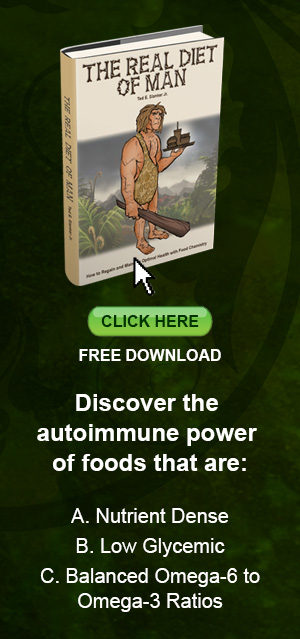Are Lectins Natural Insecticides?
Column #189 
Lectins are controversial. There’s research and many opinions on both sides of the isle about the health risks from eating foods high in lectins. Consequently because of strong opinions for and against, even the middle ground can bring on reader outrage.
In the health food industry there’s one relatively famous individual who has made lectins a big business. Dr. Steven Gundry has produced many books and online videos with warnings about consuming foods high in lectins. He believes that lectins are linked to diabetes, aching joints, Parkinson’s disease, depression, IBS, infertility, cancer, baldness, brain fog, weight gain obesity, high blood pressure, “bad” cholesterol, inflammation, autoimmune diseases (celiac disease, diabetes, and rheumatoid arthritis), and many other serious medical conditions including heart disease. He has also developed quite a business selling his expensive “lectin blocker” supplement.
In the research report titled “Insecticidal Activity of Plant Lectins and Potential Application in Crop Protection,” the authors stated that “Based on the data presented, we emphasize the contribution that plant lectins may make as tools for the development of integrated insect pest control strategies.” Obviously there is no debate about why plants produce lectins primarily in their seeds. It’s to ward off insects and perpetuate their species. So should we be worried?
Among the lectins known to have toxic effects is phytohaemagglutinin, a lectin which occurs at relatively high levels in the seeds of legumes (e.g., beans). It’s highly toxic and is found at relatively high levels in raw beans. According to the FDA, the most toxic bean is red kidney beans. Eating as few as four raw kidney beans can cause vomiting and a host of other gastrointestinal symptoms. Therefore phytohaemagglutinin is definitely something you don’t want to mess with.
Lectins are widely occurring, sugar-binding proteins that perform several biological functions in plants and animals, including humans. They are not all toxic, although at high levels some are toxic. Besides inducing cell division, lectins are known for their ability to cause mammalian red blood cell types to stick together, alter cell-membrane transport systems, alter cell permeability to proteins, and generally interfere with cellular metabolism. Since they’re mostly indigestible, they can play havoc with the intestinal lining. Therefore inflammatory bowel disease (IBD) sufferers can be exceptionally sensitive to lectins.
But even healthy individuals can experience extreme nausea, vomiting, and diarrhea from consuming undercooked beans. The phytohaemagglutinin content levels in foods are measured in hemagglutinating units (hau). Raw red kidney beans contain up to 70,000 hau. But after they’re thoroughly cooked, they contain only 200–400 hau, a level the FDA considers safe. Soaking for hours and then boiling red kidney beans for at least an hour is why people have been able to eat them for thousands of years.
People have often survived for extended periods on nearly an all bean diet. For as long as beans are properly cooked, they are actually a valuable and nutritious food. The data in my Food Analysis tables shows that most beans are more nutritious than grain, nuts, seeds, and fruit. The FDA states that the lectin toxin “is destroyed by adequate cooking.” It recommends that consumers “boil the beans for at least 30 minutes to ensure that the product reaches sufficient temperature, for a sufficient amount of time, to completely destroy the toxin. Slow cookers should not be used to cook these beans or dishes that contain them. Studies of casseroles cooked in slow cookers revealed that the food often reached internal temperatures of only 167°F or less, which is inadequate for destruction of the toxin.”
There are hundreds of different lectins and some are actually beneficial. They are ubiquitous since they are present in all organisms: Viruses, Bacteria, Plant, and Animal. So it’s impossible to have a 100% lectin free diet. And this is where dose and the strength of one’s immunity and overall health is important.
Lectin doses are relatively low in diets high in properly prepared whole foods that are low glycemic, nutrient dense and diverse, with less than a 2:1 balance of Omega-6 to Omega-3 essential fatty acids (EFAs). There are literally thousands of research papers supporting the claims that EFA ratios below 2:1 strengthen the immune systems, fortify the nervous system, improve brain function, and lower inflammatory markers. That’s why low ratio foods are important.
All foods including grass-fed meats have lectins in them which means our bodies also contain lectins. Apparently there’s no way anyone can be “lectin free.” In fact, to survive we need lectins! This is why I do not think lectins in and of themselves cause chronic diseases nor do I believe a so-called “lectin-free” diet cures chronic diseases. Instead lectins, like water, can be associated with all chronic diseases just because lectins and water are ubiquitous. Avoiding high lectin grains, nuts, and seeds in favor of low-lectin vegetables and grass-fed and Omega-3 meats, replaces high glycemic, nutritionally skewed foods that have high EFA ratios, with far better foods that have a record of suppressing chronic diseases.
There is no question that even small doses of lectins can cause IBS sufferers to have painful, discomforting relapses. But in their cases the lectins are only exacerbating a condition initially caused by a fungus fed with sugars or an autoimmune condition that has eaten away at the intestinal tract. Eating high glycemic foods (sugars and carbs) causes fungi to release mycotoxins which are highly toxic. Eating foods with high EFA ratios weaken the immune system which can cause autoimmune diseases. In both cases grains, nuts, seeds, and too much fruit are the culprits.
So, even though in plants some lectins can be an insecticide, they are just one of the many natural pesticide defenses plants produce. All plants produce defenses and if the EPA checked plants for toxicity with the same standards used for testing conventional and organic agricultural applications, most plants would fail. This is why dose is important and why protecting our immune system is critically important. It’s also why some plants, even those grown organically, are poisonous.
To your health.
Ted Slanker
Ted Slanker has been reporting on the fundamentals of nutritional research in publications, television and radio appearances, and at conferences since 1999. He condenses complex studies into the basics required for health and well-being. His eBook, The Real Diet of Man, is available online.
Don’t miss these links for additional reading:
Bad Bug Book Handbook of Foodborne Pathogenic Microorganisms and Natural Toxins published by the Center for Food Safety and Applied Nutrition, of the Food and Drug Administration (FDA), U.S. Department of Health and Human Services
Insecticidal Activity of Plant Lectins and Potential Application in Crop Protection by Maria Lígia R. Macedo, et al.
Lectins: Types, Specificities, and Functions by Complex Carbohydrate Research Center University of Georgia
Animal Lectin Families by Dr. Alison Nairn or Dr. Kelley Moremen at the Complex Carbohydrate Research Center University of Georgia
Mayo Clinic Q and A: What Are Dietary Lectins and Should You Avoid Eating Them? By Liza Torborg
No, You Probably Shouldn’t Follow Kelly Clarkson’s ‘Lectin-Free’ Diet by Bahar Gholipour, Live Science Contributor
Why You Should Ignore “The Plant Paradox” by Steven Gundry by Dr. Anthony P of The Skeptical Cardiologist
Food Analysis: EFA, Protein to Fat, Net Carbs, Sugar, and Nutrient Load by Ted Slanker
Organically Grown Poisonous Plants by Ted Slanker
Animal Lectins: A Historical Introduction and Overview, an Abstract by D.C. Kilpatrick
Dietary Pesticides (99.99% All Natural)
Nature’s Chemicals and Synthetic Chemicals Comparative Toxicology
Health Dangers of Lectins by Dr. Kevin Stock
A Contrarian Viewpoint: Lectins: The New Gluten? by Wellness Letter in the University of California Berkeley Wellness Website
The Next Gluten: Plant Proteins Called Lectins Are an Emerging Source of Confusion and Fear by James Hamblin M.D. at The Atlantic
Debunking the Lectin-Free Diet Fad by Case Adams, Naturopath
The Trouble With Lectins by Stacey Colino, Contributor to U.S. News and World Report
List of Foods that Contain Lectin by Jessica Bruso at Livestrong.com
Lectin from Wikipedia




